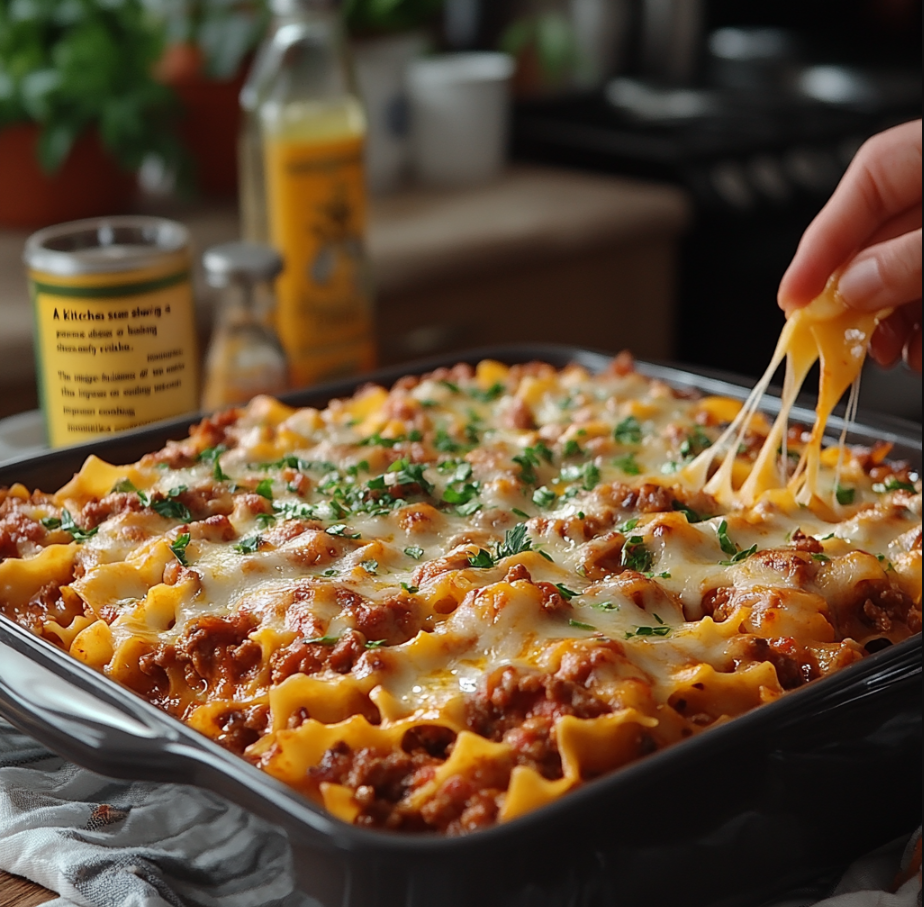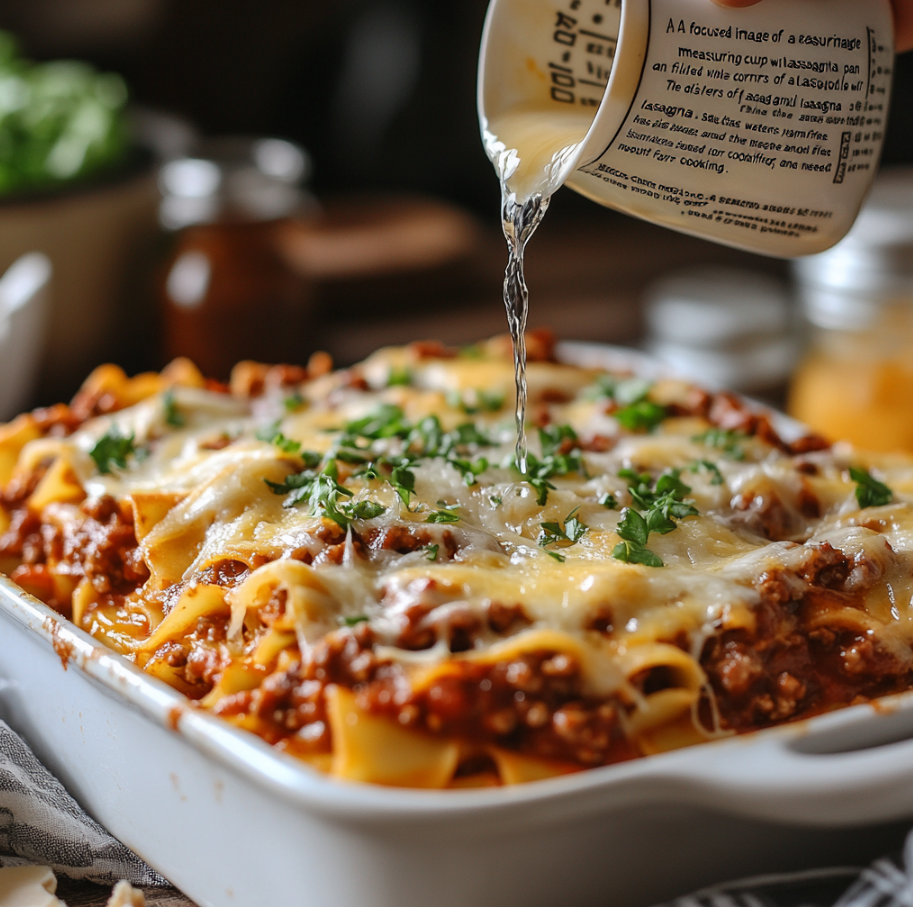Lasagna is a classic dish loved by many, and no-boil lasagna noodles make the preparation easier and quicker. However, one common question that comes up is whether you need to add water when using no-boil noodles. In this article, we’ll dive into the answer, explore how much water you might need to add, and what can happen if you skip this step.
- What is No-Boil Lasagna?
- Do You Need to Add Water to No-Boil Lasagna?
- How Much Water Should You Add to No-Boil Lasagna?
- Does Adding Water Affect the Taste and Texture?
- What Happens If You Don’t Add Water?
- Common Mistakes When Cooking No-Boil Lasagna
- Alternative Liquids for Cooking No-Boil Lasagna
- FAQs
- Conclusion

What is No-Boil Lasagna?
No-boil lasagna noodles are pre-cooked and dried, which allows them to soften during the baking process by absorbing moisture from the sauce and other ingredients. They eliminate the need to pre-cook the noodles, saving time and effort. However, whether or not you need to add water largely depends on the consistency of the sauce you’re using.
For instance, if you’re using a thicker sauce like marinara, you may need to add water to ensure the noodles cook properly. Thinner sauces, such as Old World Style Ragu, may already provide enough moisture on their own.
If you’re interested in pasta-based recipes, check out this Pasta Alla Norma recipe for a different Italian dish with a rich tomato sauce.
Do You Need to Add Water to No-Boil Lasagna?
In many cases, yes. The noodles need moisture to soften during baking. If your sauce is thick, like a hearty marinara, adding 1/4 to 1/2 cup of water to the edges of the pan can help ensure the noodles absorb enough moisture. If you skip this step, the noodles may remain tough or chewy, detracting from the overall texture of the dish.
It’s important to gauge the thickness of your sauce. Thick sauces require additional water, while thin sauces may not. As a rule of thumb, if the sauce holds its shape on a spoon, it’s thick, and water should be added. If it flows easily, you can skip adding water.
For a lighter side dish that complements lasagna, consider making this Mediterranean Couscous Salad.

How Much Water Should You Add to No-Boil Lasagna?
The amount of water needed depends on:
- Sauce consistency: Thicker sauces need more water.
- Pan size: Larger pans may require more liquid to evenly cover the noodles.
- Noodle brand: Some no-boil noodles absorb more moisture than others.
Typically, adding 1/4 to 1/2 cup of water around the edges of the pan should be enough. The water will mix with the sauce and help the noodles cook evenly without becoming too soggy or undercooked.

Does Adding Water Affect the Taste and Texture?
While adding water might seem like it could dilute the flavor, this isn’t the case if you use the right amount. The water will mainly be absorbed by the noodles during baking, leaving the flavors of the sauce and cheese intact. Proper hydration of the noodles ensures they turn out tender and well-cooked, while also maintaining the layers’ structure.
What Happens If You Don’t Add Water?
If you skip adding water when using a thick sauce, the no-boil noodles might not cook properly. They may turn out dry or chewy, and the layers won’t meld together as well. If your lasagna comes out too dry, you can try the following:
- Add extra sauce: Drizzle more sauce over the lasagna, cover it with foil, and bake for an additional 10-15 minutes.
- Extend bake time: Simply baking the lasagna longer, while keeping it covered with foil, can help ensure the noodles absorb enough moisture.
Common Mistakes When Cooking No-Boil Lasagna
Here are a few common mistakes to avoid:
- Not adding enough liquid: Without enough moisture, the noodles will be undercooked.
- Using a sauce that’s too thick: Thick sauces need to be balanced with water to prevent dry noodles.
- Incorrect layering: Ensure all noodles are fully covered with sauce to prevent dry spots.
Alternative Liquids for Cooking No-Boil Lasagna
While water is commonly used, there are other liquids you can add to enhance the flavor:
- Broth: Chicken or vegetable broth can add depth to the flavor.
- Wine: A splash of red or white wine can give the lasagna a sophisticated taste.
FAQs
Do I have to add water to every no-boil lasagna recipe?
No, not all recipes require additional water. If your sauce is thin, it may provide enough moisture on its own.
What should I do if my no-boil lasagna turns out dry?
Add more sauce or some water, cover with foil, and return it to the oven for an additional 10-15 minutes.
Can you freeze no-boil lasagna?
Yes, you can freeze no-boil lasagna before or after baking. Wrap it tightly in plastic wrap and foil to freeze it for up to three months.
Conclusion
Adding water to your no-boil lasagna recipe ensures that the noodles cook properly and prevents dryness. The amount of water depends on the thickness of your sauce, but in most cases, 1/4 to 1/2 cup of water will suffice. Whether you’re a novice or a seasoned cook, paying attention to the moisture content will help you achieve a perfectly layered and flavorful lasagna.
Looking for more Italian-inspired dishes? Try this Easy Lasagna Soup Recipe for a comforting twist on the classic lasagna dish.

